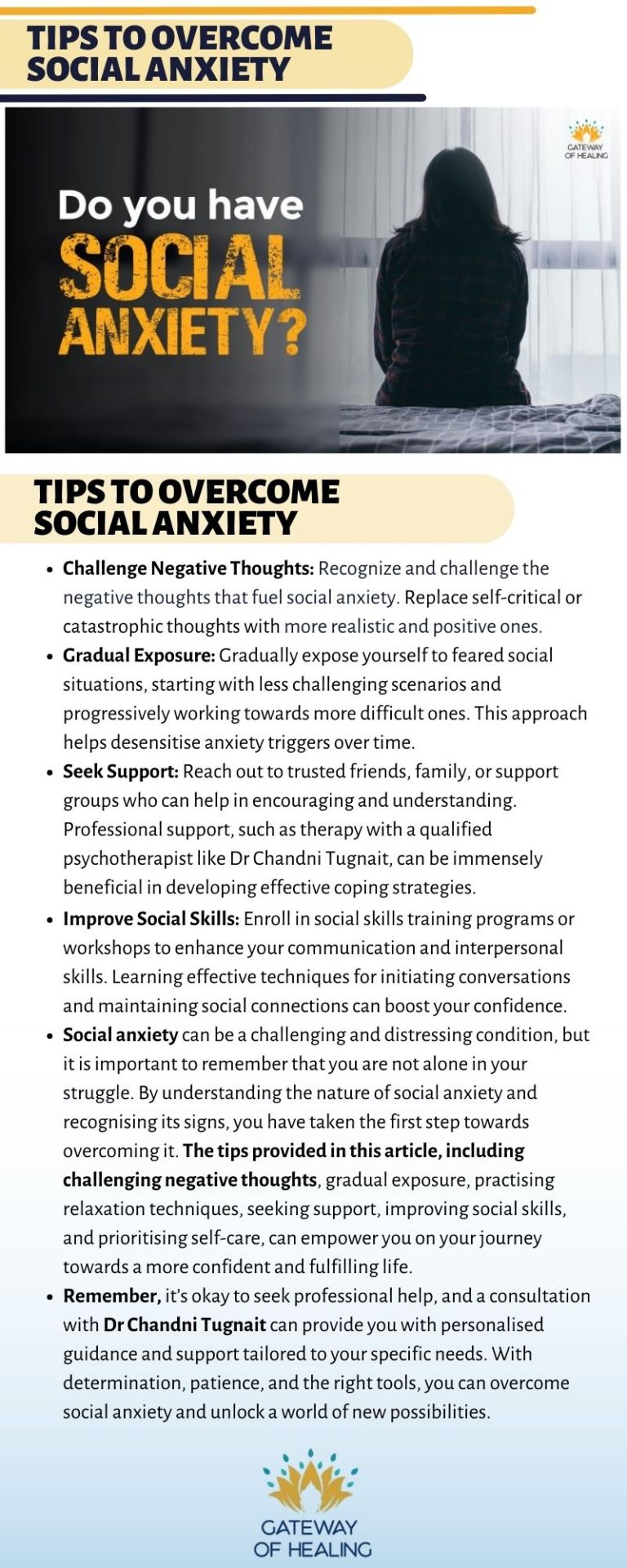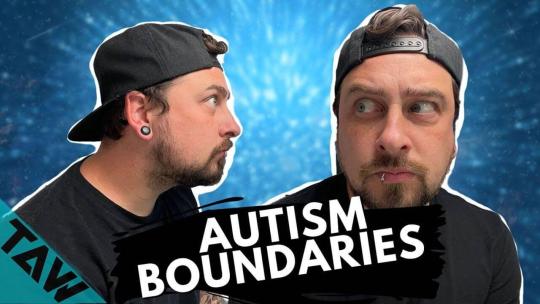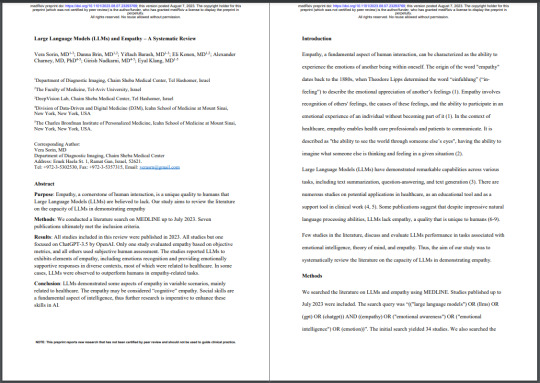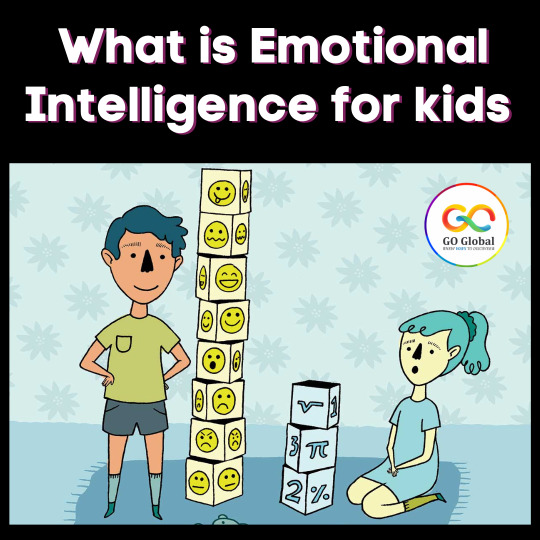#socialskills
Text
Fun and Engaging Social Skills Exercises for Kids

Building social skills in kids is crucial for their overall development.
Here are some fun and engaging social skills exercises for kids:
Role-Playing:
Create scenarios where kids can take on different roles and act out social situations. This helps them understand different perspectives and practice appropriate responses.
Emotion Charades:
Have kids play a game of charades, but instead of acting out objects or actions, they act out different emotions. This helps them recognize and understand emotions in themselves and others.
Storytelling Circle:
Sit in a circle and start a story. Each child adds a sentence or two to continue the story. This encourages listening, turn-taking, and creativity.
Team-building Activities:
Engage in activities that require teamwork, like building a tower with blocks or solving puzzles. This fosters collaboration and communication.
Eye Contact Challenge:
Practice making eye contact by having a friendly contest. Kids can pair up and take turns maintaining eye contact for a set period. This helps build confidence in social interactions.
Compliment Circle:
Sit in a circle, and each child gives a compliment to the person on their right. Rotate until everyone has received a compliment. This promotes positivity and boosts self-esteem.
Listening Bingo:
Create bingo cards with different listening-related behaviors (e.g., nodding, asking questions, paraphrasing). Kids mark off the behaviors they observe during a conversation.
Feelings Journal:
Have kids keep a feelings journal where they draw or write about their emotions each day. This encourages self-awareness and expression.
Manners Scavenger Hunt:
Create a list of good manners and politeness behaviors. Have kids go on a scavenger hunt to find examples of these behaviors in their environment.
Guess the Emotion:
Show pictures or act out different emotions, and have kids guess what emotion is being portrayed. This helps them recognize and understand emotions in others.
Collaborative Art Project:
Engage in a group art project where each child contributes to a larger piece of art. This encourages cooperation, communication, and creativity.
Charity Projects:
Involve kids in simple charity projects, such as making cards for nursing home residents or collecting items for a local food bank. This instills a sense of empathy and community.
Remember to tailor these activities to the age and developmental level of the children involved. The key is to make learning social skills enjoyable and interactive.
READ FOR MORE INFO SO PLEASE CLICK HERE & VISIT OUR MAIN WEB PORTAL
#selcompetencies#socialactivities#socialandemotionalskills#socialemotionalskills#socialskills#socialskillsactivities#socialskillsexercises
3 notes
·
View notes
Text
The Art of Compliments: How to Accept Them Like a Pro!
🌟 Embrace the power of compliments! 💖 Boost confidence, spread positivity, and cultivate self-love with our expert tips. Dive into the art of accepting praise gracefully and join us on the journey to self-acceptance! #Compliments #SelfLove #Positivity
Hey there, lovely readers! Today, we’re diving into the wonderful world of compliments – those little confidence boosters that can turn a frown upside down. Compliments are like verbal confetti, sprinkling a bit of joy into our lives. But hey, let’s admit it, sometimes accepting them can feel a bit like trying to catch confetti in a hurricane.
So, let’s unravel the mystery behind compliments,…

View On WordPress
#Acceptance#AcceptingCompliments#CommunicationSkills#Compliments#ConfidenceBuilding#EmotionalWellness#Empowerment#Encouragement#Gratitude#Happiness#Inspiration#KindnessMatters#mindfulness#MindsetShift#Motivation#PersonalDevelopment#PersonalGrowth#PositiveMindset#PositiveThinking#Positivity#SelfConfidence#SelfEsteem#SelfImprovement#SelfLove#SelfWorth#SocialInteraction#SocialSkills#SupportiveCommunity#WellBeing#adventure
2 notes
·
View notes
Text
Autism and Friendship: Navigating Social Relationships
Friendships can be both enriching and challenging for individuals on the autism spectrum. Today, let's share strategies and experiences that can help build and maintain meaningful and supportive friendships. Do you have any tips or stories you'd like to share?
5 notes
·
View notes
Text

Overcome Social Anxiety Now !
Social anxiety, a common mental health condition, can significantly impact a person’s well-being and everyday life.
2 notes
·
View notes
Text
Personal development is essential for success in all aspects of life, and personality development classes in Singapore offered by Kiya Learning provide valuable insights and practical skills for self-improvement. Our session include activities, and discussions, students enhance their self-awareness, confidence, communication skills.
#PersonalityDevelopment#PersonalGrowth#SelfImprovement#SingaporePersonalDevelopment#LifeSkills#CommunicationSkills#ConfidenceBuilding#LeadershipDevelopment#PublicSpeaking#EmotionalIntelligence#SelfAwareness#SelfEsteem#PositiveMindset#SocialSkills#InterpersonalSkills#ProfessionalDevelopment#SingaporeTraining#PersonalEffectiveness#CareerDevelopment#SoftSkills#PersonalEmpowerment
0 notes
Link
#bodylanguage#communicationpatterns#self-confidence#socialcues#socialdynamics#socialinteractions#socialskills
0 notes
Text

Here are 5 autism boundaries hacks you can use to stop struggling in social situations.
People on the autism spectrum have issues and difficulties with social interaction and conversations.
Here are some awesome tips and hacks to help you become better at socialising and
1.Standing Too Close:
There is a socially accepted distance to stand apart form another person when talking. Autistc people have issues knowing this distance. It is typically between one to two meters in distance.
2.Knowing When To Talk:
In conversations everyone has their turn to talk. It is not accepted to talk over one another or interrupt someone while they are talking.
3.Knowing When To Stop Talking:
One big issues for autistic people is knowing when you are talking too long and when people are bored of you talking. Trying to keep a short precise conversation is the best way to keep on top of talking time.
4.Knowing What Not To Say:
It is not acceptable to bring up personally embarrassing or emotion / sensory topic about someone or yourself in a social conversation, especially a group situation.
5.Correct Engage And Depart:
It is know to enter a conversation with a small greeting and wait for a question to be asked of you first before talking. Then before leaving a conversation, give a reason for your departure without an abrupt leaving.
If you have anything to add please leave it in a comment down below. Please follow @TheAspieWorld for more autism content.
Video: https://youtu.be/ztPp7cKZ_fM?si=v7ifZ2miZzO-Lv0Y
https://bit.ly/49LiRqk
#AutismBlog#autismadvice#autismboundaries#autismhelp#autismnoboundaries#autismsocialanxiety#autismsocialskills#autismtherapy#autismtips#autismtreatment#autismunderstandingboundaries#autisticadult#autisticspectrum#autisticwoman#boundarieswithautism#highfunctioningautism#resourcesforautism#sensoryprocessingdisorder#socialboundariesautism#socialskills#teachingboundariesautism
0 notes
Text
Strategies for Teenage Transitions in New Schools
Transitioning to a new school as a teenager can be daunting. Explore our comprehensive guide packed with practical tips and insights to help you build authentic connections and navigate social dynamics with confidence in your new academic environment! Read more:
#TransitionsToNewSchool#NewSchool#NewSchoolChallenges#TeenLife#SocialSkills#TeenageTransitions#NewSchools#NavigatingChallenges#AdolescentJourney#SchoolTransition#BuildingConnections#TeenageExperience#NavigatingSocialLandscape#family
0 notes
Text
Do teachers teach students with special needs to require social skills training?
Social skills training in special education involves structured and intentional instruction to help individuals with special needs develop the necessary skills for effective social interactions.
Teachers often incorporate social skills training into their instruction for students with special needs. Developing social skills is crucial for the overall well-being and success of students, including…
View On WordPress
0 notes
Text
Unleashing the Power of Play: The Numerous Benefits of Play-Based Pediatric Occupational Therapy
As pediatric occupational therapists, we know that children learn and develop through play. Play not only allows children to have fun, but it also helps them develop the skills they need for daily activities and function. This is why play-based Occupational Therapy (OT) has become a popular approach among therapists and parents alike as it offers a range of benefits for children. Let’s dive in deeper to explore some of the key benefits of play-based OT.
1. Improves Motor Skills
Play-based OT is a great way to improve a child's motor skills, including both gross and fine motor skills. By incorporating various activities into therapy sessions, such as building blocks, playing with playdough, catching and throwing a ball, or crawling under an obstacle course, children can improve their coordination, balance, and strength. This can help them with daily activities such as dressing, feeding, and writing.
2. Enhances Cognitive Skills
Play-based OT can also help children improve their cognitive skills such as problem-solving, planning, and organization. By engaging children in activities such as puzzles, memory games, and board games, children can improve their attention, memory, and processing skills. This can help them with school-related tasks like reading, writing, and math.
3. Boosts Self-Esteem
Play-based therapy can be an excellent way to boost a child's self-esteem and confidence. By providing a safe and supportive environment where they can be creative and explore different materials and activities, children can experience success and accomplishment. This can help them feel more confident in their abilities and encourage them to try new things.
4. Facilitates Socialization
Play-based therapy sessions also offer children the opportunity to socialize and interact with others, which is an essential aspect of their development. In group sessions, for example, children can learn how to share, take turns, and collaborate with others while engaging in different activities. This can also help children improve their communication skills and develop relationships with peers.
5. Customizable to Individual Needs
Play-based therapy is customizable to each child's unique needs. Play-based sessions can be tailored to target specific skills and areas of weakness, whether it's fine motor skills, sensory processing, or social skills. This way, each child can receive a personalized approach that meets their specific needs and goals.
#pediatricoccupationaltherapy#OTforchildren#sensoryprocessing#fineandgrossmotor#handwriting#feedingtherapy#autism#developmentaldelay#cognitiveimpairment#behavioraldisorders#ADHD#learningdisabilities#earlyintervention#sensoryintegration#visualperception#socialskills#motorplanning#selfregulation#assistivetechnology#schoolbasedOT#playtherapy#therapeuticinterventions#balanceandcoordination#mentalhealth#occupationaltherapygoals
1 note
·
View note
Text
youtube
#SocialHacks#LifeHacks#SocialSkills#UnconventionalTips#EffectiveCommunication#FirstImpressions#BodyLanguage#SmartStrategies#EverydayInteractions#PositiveImpressions#SocialSuccess#CommunicationSkills#NetworkingTips#CreativeIdeas#MindfulLiving#SocialEmpowerment#InnovativeSolutions#InteractionHacks#LifeSkills#PersonalGrowth#HumanBehavior#EffectiveSocializing#Youtube
0 notes
Text
Building Young Connections: Fun and Effective Social Skills Exercises for Kids

Building social skills in children is crucial for their overall development. Fun and effective social skills exercises can help kids learn to communicate, cooperate, and interact positively with their peers.
Some engaging activities to foster social skills Exercises in children:
1. Role-playing Games:
a. Set up scenarios that children may encounter in real-life situations (e.g., sharing toys, asking for help, resolving conflicts).
b. Have them take turns playing different roles to practice empathy and perspective-taking.
2. Team-building Activities:
a. Arrange group activities that require teamwork, such as building a tower with blocks or solving a puzzle together.
b. Emphasize the importance of communication and cooperation to achieve a common goal.
3. Emotion Charades:
a. Write different emotions on cards (happy, sad, angry, surprised) and have children act out the emotions without speaking.
b. Encourage others to guess the emotion and discuss situations that might lead to those feelings.
4. Storytelling Circle:
a. Form a circle and start a story. Each child adds a sentence to contribute to the unfolding narrative.
b. This activity promotes listening skills, creativity, and taking turns in a group setting.
5. Friendship Bingo:
a. Create bingo cards with different friendship-related actions or qualities (e.g., sharing, listening, helping).
b. As children engage in positive behaviors, they can mark off the corresponding squares on their cards.
READ FOR MORE INFO SO PLEASE CLICK HERE & VISIT OUR MAIN WEB PORTAL
#selcompetencies#socialactivities#socialandemotionalskills#socialemotionalskills#socialskills#socialskillsactivities#socialskillsexercises
2 notes
·
View notes
Text
Analysis of: "Large Language Models (LLMs) and Empathy – A Systematic Review" by Department of Diagnostic Imaging, Chaim Sheba Medical Center

PDF download: https://www.medrxiv.org/content/medrxiv/early/2023/08/07/2023.08.07.23293769.full.pdf
Here is a summary of the key points in this discussion:
The document is a systematic literature review that aims to evaluate the capacity of large language models to demonstrate empathy.
It conducts a comprehensive search of studies evaluating empathy in LLMs and applies inclusion/exclusion criteria to identify 7 relevant publications.
The review finds LLMs exhibit elements of cognitive empathy like emotion recognition and providing emotionally supportive responses.
It acknowledges limitations in generalizing findings given most studies evaluate one LLM and calls for more research on social skills.
The summary, methodology, and conclusions are evaluated to adhere properly to the systematic review genre and knowledge in the field.
Stakeholders, perspectives considered, and implications for related topics are thoughtfully analyzed.
Overall the review is found to present a reasonably objective analysis to establish an initial understanding while recognizing ongoing progress is needed.
Interactive discussion helps fully evaluate multiple aspects of the document's relevance, strengths, limitations and usefulness for experts.
Here is a summary of the key points from the document in bullet points:
The study aimed to systematically review the literature on the capacity of large language models (LLMs) to demonstrate empathy.
A literature search was conducted on MEDLINE up to July 2023, identifying 7 publications that met the inclusion criteria.
All included studies were published in 2023 and evaluated empathy exhibited by ChatGPT-3.5, except one study which also evaluated a model based on LLaMA and GPT-4.
The studies reported that LLMs exhibited elements of empathy through emotion recognition, providing emotionally supportive responses, and showing empathy in medical contexts like breaking bad news, caring for cancer patients, and responding to patient questions.
In some cases, LLMs were observed to outperform humans in empathy-related tasks according to objective metrics.
LLMs showed limitations like occasional deviations from correct responses, short-term memory constraints, and repetitive empathy expressions.
The empathy demonstrated by LLMs was considered a form of "cognitive empathy" involving understanding others' feelings rather than experiencing affective empathy.
Further research is needed to enhance social skills in AI, which are fundamental to intelligence. Developing empathy in LLMs could improve their roles in healthcare.
Based on its content and structure, this document appears to be a systematic literature review.
Some evidence that suggests it is a systematic review:
It clearly states its objective is to systematically review the literature on a specific topic (the capacity of LLMs to demonstrate empathy).
It describes a systematic search process that was conducted of a specific database (MEDLINE) up to a certain date, with inclusion/exclusion criteria applied to identify relevant studies.
It presents the results of the included studies summarizing their objectives, methods, findings and limitations in a structured manner (in a table).
It discusses the findings from the included studies in an analytical manner to draw overall conclusions. It acknowledges limitations of the review.
It follows the typical sections and organization of a systematic review - introduction, methods, results, discussion.
The hallmarks of having a focused question, predefined search/selection criteria, structured analysis/presentation of included studies and drawing evidence-based conclusions designate this as belonging to the genre of a systematic literature review. Its publication on a preprint server rather than a journal also aligns with it being work in progress rather than a final published review.
Here are some key stakeholders that could be affected by this document and brief evaluations:
AI researchers/developers - Provides insights to guide further research on developing empathy/social skills in LLMs. Could influence priorities.
Healthcare providers - Highlights potential benefits but also limitations of LLMs if used in clinical settings requiring empathy. Important considerations.
Patients - May influence public perceptions of and trust in LLMs for healthcare use cases. Ensures patient well-being is prioritized in research.
Ethics boards/regulators - Helps inform governance/guidelines on appropriate LLM applications and human-AI interaction design. Mitigates potential harms.
Journal publishers - Could impact decisions to publish/fund future related research given topic's importance and emerging nature. Promotes progress.
Model owners - Findings offer guidance but also responsibility to address issues to build robust, trustworthy and beneficial systems. Positive impact if changes are made.
Overall, while no single stakeholder is directly impacted, the review stands to reasonably inform and influence all parties to help develop LLMs and their applications responsibly, prioritizing users/the public to maximize benefits and mitigate risks. More research will better serve stakeholders through continued knowledge growth.
Here is an evaluation of the document in relation to the topic of large language models demonstrating empathy:
Relevance: The document is directly and fully focused on evaluating the state of research on this topic, making it highly relevant.
Coverage: As a systematic review, it comprehensively surveys the literature to date from multiple studies to develop an overview of the current landscape.
Insights: It synthesizes findings to provide helpful takeaways, such as the distinction between cognitive vs affective empathy in LLM abilities.
Analysis: The discussion critically analyzes limitations and considerations to draw evidence-based conclusions rather than unsupported assertions.
Objectivity: Methodical search and selection processes along with acknowledging shortcomings enhance objectivity.
Confirmability: Results presented allow readers to judge for themselves how well conclusions follow from the evidence.
Timeliness: As a pre-print, it helps inform an emergent area while interest and research are expanding rapidly.
Guidance: The review offers useful guidance for both continuing research efforts and evaluating future model and application development.
Overall, the document exhibits strong relevance, informative coverage, and reasonably objective analysis to help establish an initial benchmark for understanding how well LLMs can demonstrate empathy based on current evidence. It represents a valuable contribution and resource for scholars in this developing field.
Here is an evaluation of the document's perspective on the empathy demonstrated by LLMs being considered a form of "cognitive empathy":
Alignment with definitions: The characterization fits with established definitions that delineate cognitive empathy as understanding others' feelings versus affective empathy as experiencing emotional resonance.
Support from evidence: The studies reviewed found LLMs capable of recognizing and responding to emotions, corresponding to cognitive abilities, but not exhibiting affective components like humans.
Plausible interpretation: Given current limitations, viewing LLM empathy as cognitive provides a coherent framework for interpreting observed behaviors within constraints.
Open to revision: The authors acknowledge ongoing research is needed as models advance, leaving room for the perspective to be refined as understanding improves.
Mitigates anthropomorphism: Considering LLM empathy cognitive rather than asserting equivalency to humans helps avoid attributing more humanlike qualities than are demonstrated.
Informs future work: The framing offers sensible guidance for continued exploration of social skills in AI and distinguishing targeted capabilities.
Overall, categorizing LLM empathy exhibited so far as cognitive aligns logically with presented evidence, avoids unsupported conclusions, and provides a constructive lens for ongoing progress. This enhances the credibility and usefulness of the perspective presented in the review.
Here is an evaluation of how the document relates to the topic of social skills in AI:
Relevance: It directly discusses an important social skill (empathy) shown by AI systems, making the topic highly relevant.
Importance: By demonstrating empathy is fundamental to intelligence, it emphasizes the importance of advancing social skills in AI.
Awareness: It shows awareness that while progressing, current AI still lags humans in fully emotive social interaction abilities.
Guidance: Calling for further research provides actionable guidance toward more humanlike socio-emotional capabilities.
Balanced perspective: It offers realistic insight into limitations while also seeing potential based on reviewed evidence.
Considerations: Broader discussion of implications informs stakeholders on technical, application and policy issues.
Progress tracking: As a review, it establishes a baseline for tracking advancement over time as the field matures.
Multidisciplinary lens: Examining an AI skill through both technical and social scientific definitions enriches the view.
Overall, the document takes a well-informed, balanced and constructive approach to relating AI empathy demonstrations to the importance of continued work on general social capabilities. This makes it a useful contribution to better understanding and progressing this important aspect of AI development.
It's difficult to definitively evaluate this document against an established consensus on this topic, as research on LLM empathy capabilities is still emerging.
However, here are some observations:
The document is consistent with other analyses that LLMs show promise in limited demonstrations of empathy-related behaviors, but the field requires ongoing examination (no consensus claims they have achieved human-level empathy).
Findings that ChatGPT in particular exhibits some emotional understanding and support align with anecdotal reports, but many studies are needed for firm conclusions.
Observation that performance may involve "cognitive empathy" rather than full affective empathy aligns with speculation by other scholars on limitations.
Need for distinguishing objective metrics from subjective impressions echoed in other reviews.
Caution around generalizing from single models is prudent, as consensus has not formed on all models.
Calling for further research coincides with view that more examination is warranted as LLMs and tasks evolve rapidly.
So while no definitive consensus exists yet on a young topic, the review's perspectives do not appear to contradict preliminary insights from the wider research community. If anything, it helps add to the initial baseline under discussion. As the field matures and more studies accumulate, future reviews will better gauge any evolution in the consensus view. But this document engages thoughtfully with speculative discussions so far.
Based on the content and methodology presented in the document, here is my evaluation of its status:
Science vs Fiction: As a systematic literature review of published studies, the content is firmly grounded in science rather than fiction.
Empirical vs Anecdotal: The findings synthesized are based on empirical data and evaluations reported across multiple included studies, rather than anecdotal observations.
Fact vs Opinion: While some subjective human assessments are reported, the document relies predominantly on objectively reported results and aims to draw evidence-based conclusions, rather than assert opinions.
Objective vs Subjective: The literature search process, study selection criteria and data extraction are objective and systematic. However, some included studies involve subjective evaluations of LLM empathy. The discussion also acknowledges limitations in fully objective assessment of this topic.
In summary, as a scholarly work grounded in published evidence and following systematic review methodology, this document is firmly positioned towards the science, empirical and factual end of the relevant spectrums. While not entirely devoid of some inevitable subjective components given the nature of studying AI empathy, the overall approach and reliance on multiple studies makes it a relatively objective analysis compared to opinion or anecdote-driven perspectives. The limitations also help provide appropriate context around its conclusions.
Upon reviewing the document, I did not find any clear logical fallacies.
The authors made reasonable conclusions based on evaluating the available evidence from the included studies. Some potential minor issues are:
Limited generalizability fallacy - The review focused mostly on one LLM (ChatGPT), so conclusions may not generalize to all models. But authors acknowledge this scope limitation.
Presentism bias - Evaluating LLMs today based on current capabilities, without considering likely improvements over time as the field advances. However, authors note need for ongoing research.
Anecdotal evidence - A few studies rely on subjective human assessments rather than objective metrics. But most studies still provide empirical evidence, and limitations are acknowledged.
Correlation vs causation - Finds associations between LLM performance and empathy-like behaviors, but cannot prove LLMs experience empathy the same way humans do. Authors characterize it as "cognitive empathy".
Overall, I did not find any logical fallacies that clearly undermine the document's conclusions. The authors took reasonable steps to ground their review in evidence from multiple sources and acknowledge restrictions or weaknesses in their approach. Minor issues like limited generalizability and overlooking future progress are inevitable given the nature of the emerging field. But the review represents a logically sound initial effort to synthesize available knowledge on this topic.
Here are some common evaluation criteria for a systematic literature review genre and my evaluation of this document based on each criteria:
Clear research question/objective - The objective to review literature on LLMs capacity for empathy is clearly stated.
Comprehensive literature search - The search process and criteria appears thorough, searching a relevant database and following PRISMA guidelines.
Appropriate selection of studies - Inclusion criteria focuses studies directly assessing the objective. Exclusion criteria removes unrelated work.
Critical appraisal of studies - Studies are critically analyzed by summarizing their methods, findings and highlighting limitations.
Synthesis of findings - Key results are categorized thematically in the results table and discussion to derive overall conclusions.
Rigor of methodology - The search, selection and analysis process follows systematic review methodology rigorously.
Consideration of limitations - Study acknowledges own limitations like only evaluating one LLM mostly.
Valid interpretation of findings - The conclusions drawn align with the presented findings from the included studies.
Clear structure and writing - The document is well structured following sections of an systematic review and the writing is clear.
Overall, this document demonstrates strong adherence to the criteria expected of a systematic literature review genre based on my evaluation across the listed criteria.
#AIethics#EmpatheticAI#HealthcareAI#LLMs#Chatbot#Medicine#SystematicReview#LiteratureReview#MachineLearning#Neuroscience#Psychology#Emotions#MentalHealth#PatientCare#MedicalResearch#DataScience#NLP#SocialSkills#ConversationAI
0 notes
Text
What is Emotional Intelligence for kids

Understanding and controlling our own emotions as well as those of others is referred to as having emotional intelligence. We learn self-awareness, emotional regulation, comprehension, and social skills from emotional intelligence.we learn the value of Emotional Intelligence for kids and how to help them if they are facing any challenges emotional development. Children with emotional intelligence can manage their problems and improve their learning and cognitive capacities. It encompasses several key components:
Self-awareness: This involves recognizing and understanding one's own emotions, strengths, weaknesses, and how they impact behavior and decisions.
Self-regulation: EI includes the ability to manage and control one's emotions, especially in challenging situations, avoiding impulsive reactions.
Empathy: Empathetic individuals can understand and share the emotions of others, fostering better interpersonal relationships and communication.
Social skills: Effective communication, conflict resolution, and collaboration are integral aspects of EI, allowing individuals to navigate social situations adeptly.
Motivation: People with high EI are often self-motivated, setting and working towards meaningful goals while being resilient in the face of setbacks.
0 notes
Text
https://www.gatewayofhealing.com/blog/overcome-social-anxiety-now/
Overcome Social Anxiety Now !
Social anxiety, a common mental health condition, can significantly impact a person’s well-being and everyday life.
1 note
·
View note
Text
Watch "Nurturing Young Minds: How Children's Brains Embrace Learning" on YouTube
youtube
#childdevelopment#LearningPotential#CuriousKids#EarlyEducation#NurturingYoungMinds#ParentingTips#ChildPsychology#GrowthAndDevelopment#InspireYoungLearners#CognitiveDevelopment#EducationForAll#RaisingCuriousKids#LifelongLearning#PositiveParenting#KidsExploring#FutureLeaders#socialskills#language learning#joyfuldaddy#Youtube
0 notes